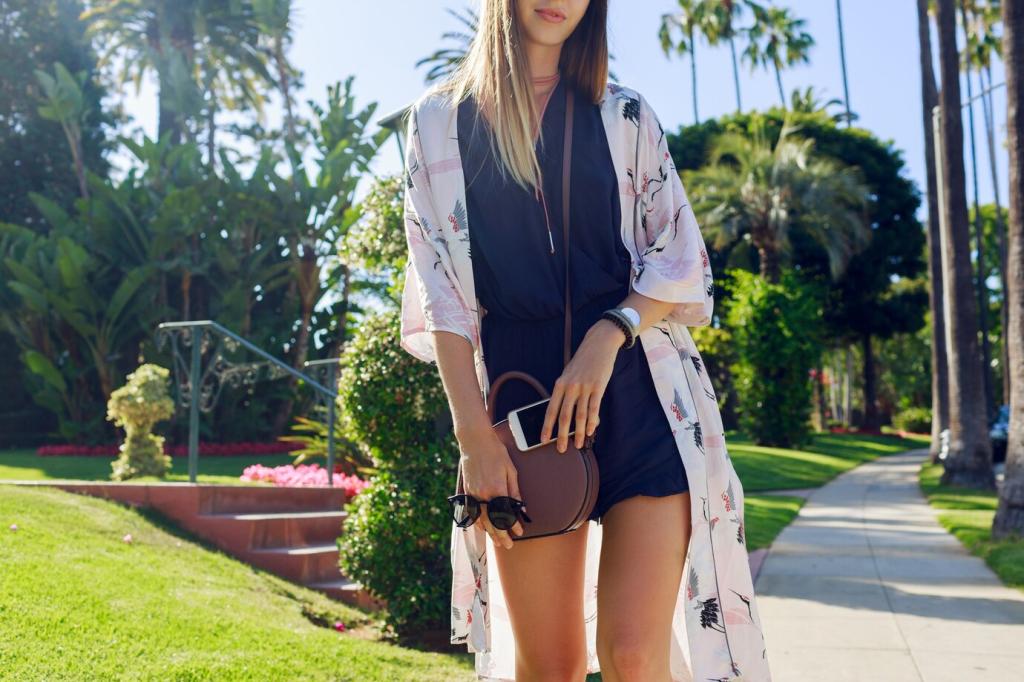Eco-Friendly Fabrics: Dressing Sustainably Year-Round
Choosing what we wear goes beyond mere style—it’s a commitment to our planet’s health and our own wellbeing. Eco-friendly fabrics offer an opportunity to embrace sustainable living through our wardrobe choices in every season. By understanding the origins, benefits, and care of these innovative materials, we can make more thoughtful decisions that reflect our values and protect the environment. This comprehensive guide explores how to incorporate eco-friendly fabrics into your wardrobe throughout the year, ensuring comfort, durability, and conscience in every piece you wear.

Conventional textiles consume vast amounts of water, energy, and toxins, all of which contribute to environmental degradation. Materials like conventional cotton are heavily reliant on pesticides and fertilizers, while synthetic fibers such as polyester are derived from nonrenewable fossil fuels and shed microplastics into waterways. The cumulative effect is a strain on ecosystems and communities alike, exacerbating climate change and diminishing global biodiversity. Shifting towards eco-friendly fabrics curtails these impacts, making our wardrobe choices part of the solution rather than the problem.

Evolving attitudes towards fashion are reshaping shopping habits, with more people prioritizing ethics and sustainability. Conscious consumerism empowers individuals to align their purchases with their values, examining supply chains, transparency, and the true cost of clothing. By selecting eco-friendly fabrics, shoppers support innovations that prioritize longevity, recyclability, and low resource input. This movement not only pressures brands to improve their practices but also inspires collective change, firmly rooting sustainability at the heart of modern fashion.

Beyond environmental considerations, sustainable fashion places a strong emphasis on the rights and wellbeing of garment workers. The eco-friendly fabrics movement advocates for fair wages, safe working conditions, and transparent employment practices in all stages of production. By choosing brands that uphold social responsibility, consumers can help to combat exploitation and injustice within the industry. This holistic approach bridges fashion and ethics, ensuring that style never comes at the expense of human dignity.

Organic Cotton: Gentle on Skin and Planet
Organic cotton is produced without synthetic pesticides or fertilizers, making it a far more sustainable alternative to conventional cotton. This method protects soil health, preserves biodiversity, and reduces water consumption. As an added benefit, organic cotton is typically softer and less likely to cause irritation, making it a favorite for sensitive skin and everyday wear. Its durability and breathability make it suitable for year-round comfort, ensuring that caring for the planet doesn’t mean sacrificing quality or versatility in your wardrobe.

Hemp: The Versatile and Resilient Choice
Renowned for its toughness and rapid growth, hemp is a powerhouse of sustainability. It requires minimal water, enriches the soil, and grows without the need for harmful chemicals. Hemp fabrics are breathable in hot weather yet provide great insulation during cooler months, making them practical for a variety of climates. They are also highly durable, resisting stretching and wear even with regular use. Incorporating hemp into your wardrobe means investing in garments that last, all while making a positive impact on the environment.

Recycled Fibers: Closing the Loop
Recycled materials such as polyester from plastic bottles and regenerated cellulose fibers offer creative ways to minimize waste and conserve resources. By transforming existing materials into new textiles, the fashion industry can significantly reduce landfill contributions and the need for virgin resources. Recycled fibers are increasingly found in all types of clothing, including performance wear and everyday basics. These fabrics embody the principles of a circular economy, helping to close the loop on waste and support a more sustainable future for fashion.
Dressing Sustainably Through the Seasons
Summer calls for light, airy textiles that wick away moisture and allow your skin to breathe. Eco-friendly fabrics such as organic linen and bamboo excel in these conditions, providing coolness and a soft touch even on the hottest days. Linen, made from the flax plant, requires little water and few chemicals while offering exceptional ventilation. Bamboo, meanwhile, grows rapidly without pesticides and naturally resists bacteria. By selecting these materials, you ensure comfort while supporting more sustainable agriculture and production practices.
